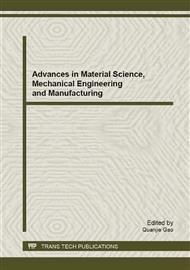p.165
p.169
p.174
p.180
p.185
p.190
p.194
p.199
p.205
Numerical Extrapolate Analysis of Joint Wear in Plan Multibody Systems
Abstract:
In this paper, Least Square method is applied to model the clearance wear to achieve the accurate prediction with low cost. So, firstly, the characteristics of the clearance wear are analyzed, i.e. time-variant, asymmetric, and coupling. Secondly, the dynamic incremental model is deduced from Archards wear law to obtain the wear incremental at a time step. Based on the wear data of the experiment, Least Squares Method is adopted to model the extrapolation function for divided sectors of contact surface. Finally, both models are applied to predict the clearance joint wear in the crank slider mechanism, getting two wear trend curves with great similarity. However, the computing time is greatly reduced in the extrapolated model.
Info:
Periodical:
Pages:
185-189
Citation:
Online since:
August 2013
Authors:
Price:
Сopyright:
© 2013 Trans Tech Publications Ltd. All Rights Reserved
Share:
Citation:


